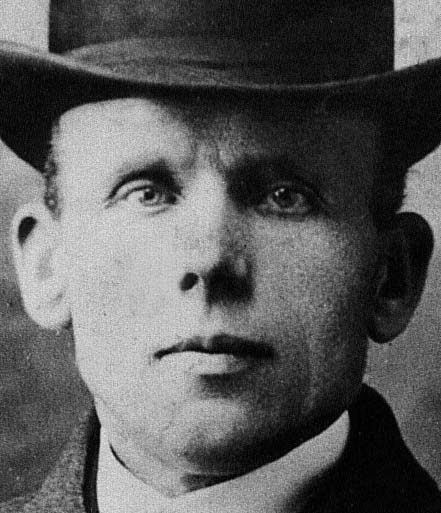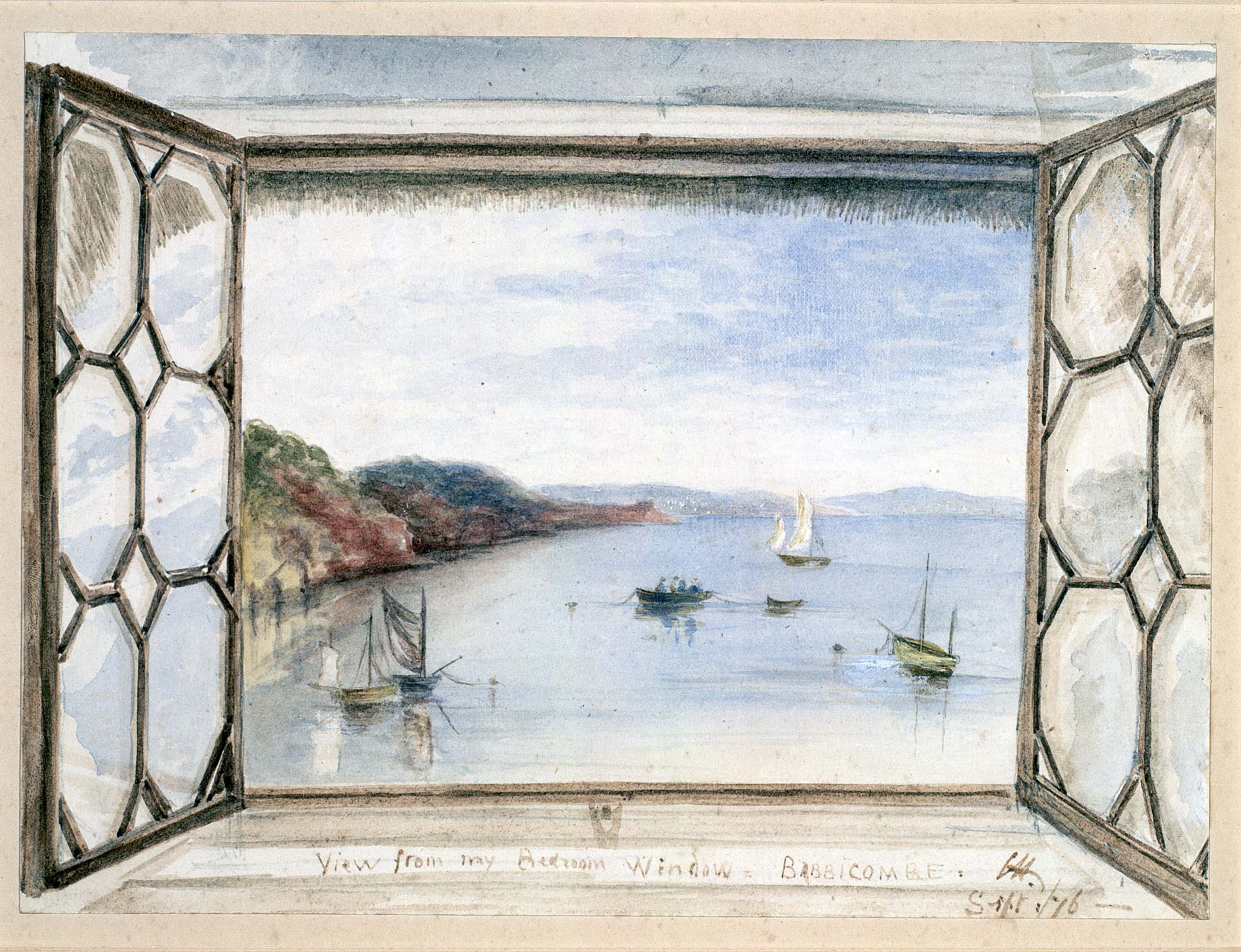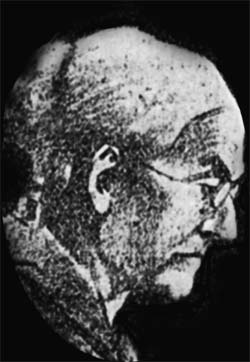This is the account of one of the most famous and meticulously researched events in British Victorian history. It revolves around a man whose life hung in the balance – the man who faced the gallows not once, not twice, but three times.
This work delves into the tragic murder of Emma Ann Whitehead Keyse in Babbacombe, England, a case surrounded by dark secrets and intrigue. Although initial suspicions pointed towards her employee, John Lee, further investigation uncovered a startling truth.
The evidence strongly suggests that a Devon solicitor, engaged in a strange relationship with Miss Keyse’s servant, was the likely culprit behind this heinous crime. This revelation sheds light on the hidden depths and complexities of the case, making it a compelling and chilling tale of Victorian history.

John ‘Babbacombe’ Lee
Born in 1864 in Abbotskerswell, Devon, England, John Henry George Lee earned a notorious reputation as a deceitful and untrustworthy individual, entangled with the police courts. In 1883, he faced a conviction for theft, but it was in 1884 that he became entwined in a more sinister act: the alleged murder of his elderly employer, Emma Ann Whitehead Keyse.
Lee’s life took a dramatic turn in 1885 when he miraculously survived not one, but three attempts at execution. Despite his remarkable escape from the gallows, he was sentenced to a lifetime behind bars. After enduring years of incarceration, Lee’s release finally came in 1907. However, his newfound freedom did not bring about a change of heart.
In 1909, he entered into matrimony with Jessie Bulled, but his commitment to their union was short-lived. Lee engaged in an extramarital affair, leaving his pregnant and malnourished wife and their child in the confines of a workhouse in 1911. Vanishing without a trace, he hoped to evade any consequences for his heartless actions.

Although the focus of this work primarily revolves around John Lee, who was found guilty of the murder of Miss Keyse, it is important to acknowledge that he is just one of several significant characters in this profoundly unsettling and peculiar case.
To claim that the prominence of this case in British criminal history hinges solely on the botched hangings at Exeter prison in 1885 would be an oversimplification. The murder itself, along with its chilling attempted executions, sent shockwaves throughout Britain and even resonated beyond its borders. The distinctive manner in which Emma Keyse was killed, coupled with the elaborate attempts to conceal the true cause of death through multiple fires, sets this case apart from similar atrocities of its time.
Babbacombe Bay, known for its tranquil beauty, presents some challenges in terms of accessibility in modern times. The steep and twisting hill that descends to the bayfront is inherently precarious, even under the best circumstances. In the 1880s, this picturesque setting would have been even more isolated and considerably arduous to reach, adding an additional layer of complexity to the unfolding events.
Emma Anne Whitehead Keyse was born in 1816 in Edmonton, North London, as the daughter of Thomas and Elizabeth Keyse (1783 – 1871). Tragically, Emma lost her father at the tender age of four. Left with limited means, the unmarried Emma Keyse eventually inherited her mother’s property, ‘The Glen,’ upon her passing. Life within the immediate circle of Emma Keyse was, to put it mildly, subdued. With her strict religious convictions, Miss Keyse fostered an atmosphere of confinement within her household. Residing in ‘The Glen’ was hardly an exhilarating experience.

For the two aging sisters who had dutifully served her now deceased mother, and now Emma Keyse, the monotony had become their norm. However, a different narrative unfolded for the cook, Elizabeth Harris. At the time of her employer’s death, Elizabeth was carrying a child, and her daughter Beatrice came into the world in 1885. As for the self-proclaimed footman, the boastful and ambitious young John Lee, who had recently returned to his position after serving time in prison for theft at another residence, life at ‘The Glen’ must have felt stifling and unbearably monotonous beyond imagination.

In this oppressive household, only occasional visitors could have slightly alleviated the heavy atmosphere. One such acquaintance of Miss Keyse was a young solicitor from Newton Abbot, Reginald Gwynne Templer, hailing from Teignmouth. The Templers, known for their social standing, brought a certain “class” to the financially struggling Emma Keyse.
From what we can gather, Mr. Templer had taken a particular interest in Elizabeth Harris, John Lee’s stepsister, the humble cook of the household. Thus, his visits to ‘The Glen’ were not entirely burdensome. Unfortunately, Templer’s life took a tragic turn, as he succumbed to a long and debilitating illness in December 1886, known in Victorian times as “paralysis of the insane,” which is now recognised as advanced syphilis. This condition, initially seen as a psychiatric disorder when first identified in the 19th century, often manifested with sudden and severe psychotic symptoms. It is highly likely that Templer had contracted the illness prior to 1884. By 1885, his illness had progressed to a point where he was unable to mount a compelling defence for John Lee when attempting to represent him in court. The symptoms that Templer experienced may have induced fits and potentially fuelled the ferocious attack that nearly severed Emma’s head.
On the night of the murder, it is suggested that the cook, Elizabeth Harris, was entertaining guests. Witness statements and suggestions indicate that Emma Keyse had descended the stairs due to a disturbance. It is probable that those responsible for the commotion she heard were also the assailants who launched the brutal attack that ended her life.

It was Nott who arrested John Lee on suspicion of murder. “I have, since this inquiry was opened, let down the bed in the pantry. I find that between the end of the bed and the edge of the table which rests on brackets there are about four inches and a half. On the table there are (some?) small shelves and several trays. Had the brackets had been turned in and the table let down the shelves and trays must have fallen. It is impossible for a person to walk straight round the end of the bed between it and the table. They might get round it by going sideways and resting the hands on the bed. There is no other way of getting from the door of the pantry to the cupboard the right hand side of the fireplace without either going across the bed or (sliding?) round between the bed and the table. There is not room for any man to creep under the bed. The table was up in the morning on the brackets with the trays on when I saw it on Saturday morning”.
Years later, at a sombre burial, a prominent lawyer from South Devon reportedly confided to his sons present, “We have buried this afternoon the secret of the Babbacombe murder.” The interment marked the low-key farewell to 29-year-old Reginald Gwynne Templer, who had passed away at Holloways Sanatorium.
This research explores the events surrounding the murder case and conducts an in-depth investigation into the backgrounds and lives of those entangled in this historical saga. The research, spanning approximately 25 years, has been a significant part of my life ever since my grandfather recounted the tale during my childhood in the 1960s. The research has been available online in various forms since 1999, featuring meticulous transcriptions from court records. I have also co-authored a book on the subject. Remarkably, even today, when one might assume that research has reached its limit, new materials and information continue to emerge, shedding further light on the case.

‘Second House’ BBC Documentary – Broadcast 1st February 1975
Dates and Times
Tuesday, 28th October 1884
Miss Keyse sells The Glen. She settles with Elizabeth and tells Lee his wages are two bob a week, causing a row.
Tuesday, 11th November 1884
Lee writes to Katey Farmer wishing to cancel their engagement.
Friday, 14th November 1884
5.00pm Elizabeth goes to bed
11.00pm Miss Keyse, Jane, Eliza, and Lee say prayers
12.10pm Jane Neck leaves Miss Keyse writing
12.30pm Approx. time Miss Keyse goes to bed
Saturday, 15th November 1884
1.30am Earliest approx. time of Miss Keyse’s murder
2.30am Latest approx. time of Miss Keyse’s murder
2.15am Approx. time dining room fire started
3.15am Approx. time Miss Keyse’s bedroom fire started
3.30am Elizabeth raises the alarm
4.00am Gasking arrives
4.10am Richard Harris arrives
5.00am PC Julian Meech and PC Hare arrive
5.30am PS Abraham Nott arrives
5.30am Dr Chilcote examines Miss Keyse’s body
5.30am George Russell bumps into Lee going to Compton
5.45am Lee arrives at Mrs McClean’s house in Compton
6.15am PC Broughton sees Lee arrive back from Compton
10.00am Lee charged and arrested by Super. Barbour
Monday, 17th Nov. 1884
Post Mortem
Thursday, 20th Nov. 1884
Miss Keyse’s funeral at St Marychurch
17th, 18th, 21st & 28th Nov. & 1st Dec. 1884
Coroner’s Inquest
19th & 25th Nov. 1884
Torquay Police Court
1st to 4th Dec. 1884
The Magistrates Hearing
2nd to 4th Feb. 1885
The Trial, Exeter Assizes
Monday, 23rd Feb. 1885
John Lee’s attempted execution.
23rd March 1885
John Lee begins life sentence at Pentonville
24th May 1885
Elizabeth gives birth to Beatrice, at Newton Abbot Workhouse
18th December 1886
Reginald Gwynne Templer dies in a sanatorium
23rd December 1886
Reginald Gwynne Templer is buried in Teignmouth
August 1887
Rumours of the Cook’s deathbed confession
7th December 1907
John Lee released from prison
16th March 1936
Herald and Express Article
“Even as we speak there seems to be no end to the story of the Babbacombe murder and those connected to it. That on a grey morning at Exeter prison in 1885, as the life of John Lee was supposed to have ended, it in fact brought to us a character we all know as the man they could not hang” – Ian Waugh
